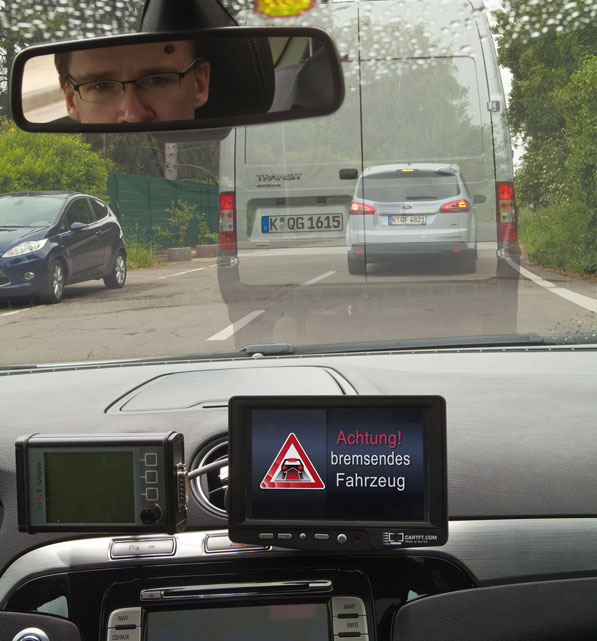Ford Demonstrates the Future of Car-to-Car Communication with Talking Vehicles that Warn of Hazards and Traffic Ahead
Content provided by Ford

Ford today demonstrated its latest advancements in vehicle-to-vehicle communications at the final CoCarX (Co-operative Cars Extended) research project presentation, further highlighting the viability of improving road safety and traffic management through the use of intelligent vehicles.
Ford is the first to showcase vehicle-to-vehicle communication using the new mobile communications network LTE (Long Term Evolution), which enables much faster data transmission than existing proposed systems.
Ford’s sophisticated vehicle-to-vehicle communication technology will play a key role in the CoCarX presentation in Düsseldorf ““ the culmination of a project that began in 2009 with the aim of developing the systems and infrastructure that would allow vehicles to update each other with hazard, driving condition and traffic information.
Leveraging localized radio frequencies and the latest mobile phone network technology, Ford’s vehicle-to-vehicle communication system allows individual cars to broadcast messages to other vehicles ““ keeping them informed and allowing them to prepare for road conditions they are yet to encounter.
Two Ford S-MAX vehicles demonstrated Ford’s developmental vehicle-to-vehicle warning system, designed to prevent drivers being taken by surprise by rapidly developing situations and changing conditions. For example, hard braking of the lead S-MAX triggers an emergency signal that is displayed inside the following S-MAX within less than 100 milliseconds.
“The notion of talking cars may immediately bring to mind thoughts of children’s movies, but the reality is that vehicles capable of speaking the same language could result in significant safety and convenience benefits for drivers,” says Christian Ress, connectivity technical expert, global driver assistance and active safety.
“Intelligent vehicles, able to send and receive messages in fractions of a second, could help warn drivers of dangers neither they nor their hazard monitoring safety systems could spot, be it because of the distance to the hazard or obstacles that block the view ahead, such as heavy traffic or bends in the road.”
Some Ford vehicles are already available with a range of technologies that are designed to detect various inputs from the driving environment and automatically assist the driver, including Lane Departure Warning, Lane Keeping Aid, Active City Stop, Driver Alert, Adaptive Cruise Control and Traffic Sign Recognition.
However, vehicle-to-vehicle communication can give advanced warning of hazards or changing conditions beyond the driver’s field of vision or the vehicle’s sensors, such as radar, light detection system or camera. By mutually sharing information on vehicle position, speed, direction of travel and even telemetry from technologies such as the Electronic Stability Programme or the Traction Control System, connected vehicles can be warned if they are on a collision course with another vehicle, if stationary traffic is present around a corner or en route, and even if there is a risk of collision when changing lanes.
Ford engineers are currently researching and developing future applications that will offer more than visual warnings to drivers ““ priming safety systems and taking accident avoidance measures in response to warnings from other intelligent vehicles.
Ford believes the ability to utilise broadband communication channels such as LTE will allow large numbers of vehicles to stay in immediate contact with each other in the future, potentially reducing the frequency of accidents, aiding traffic flow and easing road congestion ““ in turn reducing CO2 emissions.
Ford’s intelligent S-MAX vehicles also demonstrated two other capabilities made possible by the integrated LTE module at today’s CoCarX presentation. Passengers can download a video for rear seat entertainment while the driver is kept informed with real-time traffic messages. These additional capabilities work in parallel with hazard warnings, demonstrating both the capacity and quality of the functions developed by Ford as part of the CoCarX solution.
For more information regarding Ford’s products, please visit www.fordmotorcompany.com/.




